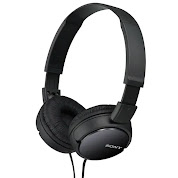M2: Explain the processes and technologies involved in producing a radio broadcast
In this post I will be discussing the uses of different hardware and software and how they will impact the production of my radio show. I will discuss both strengths and weaknesses of each.
Hardware:
Microphones & Headphones:
A mixer is used to change audio levels, play audio from now press, mixing and balancing different signals, before it is sent into the software to be edited. This will mainly be used on Capital to fade between songs and add their sound and effects to the audio being streamed live.
Radio shows are created using pre-production, production and post-production.
Pre-production
Radio shows must create scripts, audio assets, have playlists ready, have adverts prepared and they must set up equipment however not all shows use these. The show I am looking at is TalkRadio which is an improvised live conversation between the presenters and the viewers who 'call in', where the conversations may include news, politics, sports, music etc. Segments in the show are split up into multiple parts which are separated by advert breaks. TalkRadio may prepare scripts to plan out topics and competitions, which may help making sure each conversation is within the time limits of the segments. From researching, I found that each segment is 29 minutes per segment and 1 minute of adverts, so per hour there are 2x 29minute segments that make up 58 minutes. However, in public and non-commercial radio shows, the segments may instead be split up by music. the variations of TalkRadio include but don't limit to conservative talk, hot talk, liberal talk and sports talk.
Audio asset such as the jingle and any music used must be prepared before the show to make sure it can be used live on air because if it is added in post-production then the live audience won't be able to hear it. The jingle is almost a form of brand identity as it is entertaining and catchy. Also any pre-recorded audio must be prepared before the show airs as the presenters need to be able to access it at the correct time.
Playlists must be prepared as the music needs to appropriate and the presenters must know when to return as the song is ending. Also, the studio must pay royalties to stream the songs to their audiences, as they pay a certain fee for each time it is played.
The adverts would also be prepared to ensure each segment is enough time and make sure they split each segment up correctly so that they don't go over time when it is played. The adverts could include competitions, promotions, products and more. The reason public radios don't have adverts is because they are funded by the public through taxes and TV licences.
All equipment would be set up as the show will need microphones, headphones, workspaces, computers and monitors to see the tabs what they will need open such as music software and the call such as discord so that each host can hear each other.
Production:
For the production of the show they must tie everything into the pre-production such as the recording of audio as well as using the assets like music and adverts and the jingle. As soon as the radio station becomes live it is too late to pre-produce the assets. The jingle would be used in the introduction to the show to welcome the audience. Also some songs may be used before the transition into the show.
.jpg)











Comments
Post a Comment